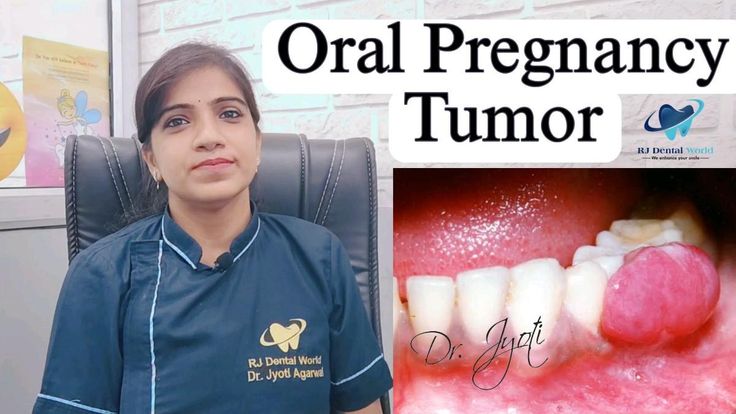Pregnancy Tumor Mouth

Pregnancy can bring about a multitude of changes in a woman’s body, some of which are well-documented and others that are less commonly discussed. One such change is the development of a condition known as pyogenic granuloma, often referred to as a “pregnancy tumor” due to its association with hormonal fluctuations during pregnancy. This condition can manifest in various parts of the body, but when it occurs in the mouth, it is particularly noteworthy due to its implications for oral health and overall comfort during this critical period.
Understanding Pyogenic Granuloma
Pyogenic granuloma is a type of inflammatory hyperplasia that appears as a soft, reddish-purple polypoid mass. It is known to occur on the skin and mucous membranes and can be triggered by various factors, including trauma, infections, and hormonal changes. The term “pregnancy tumor” might evoke concern, but it’s essential to understand that pyogenic granuloma is benign and not a true neoplasm.
Causes and Risk Factors
During pregnancy, the increased levels of estrogen and progesterone can lead to an exaggerated response to irritants or minor trauma, making some women more susceptible to developing pyogenic granuloma. Other risk factors include poor oral hygiene, irritation from dental appliances, and genetic predisposition. The condition can appear at any time during pregnancy but often resolves on its own after pregnancy, suggesting a strong hormonal influence.
Symptoms and Diagnosis
The symptoms of oral pyogenic granuloma can vary but typically include the appearance of a bleeding lump or bump on the gums, which can be painful, especially when irritated by hard foods or during oral hygiene practices. The diagnosis is usually based on clinical appearance and can be confirmed by a biopsy, which is essential to rule out other conditions, including malignancies.
Differential Diagnosis
It’s crucial to differentiate pyogenic granuloma from other oral lesions, such as peripheral giant cell granuloma, fibroma, and malignant tumors. A thorough oral examination, review of the patient’s medical history, and, when necessary, histopathological examination can help in making an accurate diagnosis.
Management and Treatment
The management of pyogenic granuloma in the mouth during pregnancy requires a conservative approach, considering the patient’s condition and the potential effects of any treatment on the fetus. Initially, attempts to remove irritants and improve oral hygiene may be sufficient. In some cases, surgical excision may be necessary, particularly if the lesion is large, interferes with oral function, or is a source of significant discomfort.
Conservative Management
Conservative management involves removing any source of irritation, improving dental hygiene, and possibly using mouthwashes or topical applications to reduce inflammation. This approach is particularly favored during pregnancy due to its non-invasive nature and minimal risk to the fetus.
Surgical Intervention
When surgery is deemed necessary, it is typically performed after the first trimester, to minimize risks associated with early pregnancy. The procedure involves excising the lesion, and in some cases, using laser therapy to minimize bleeding and promote healing.
Prevention and Post-Pregnancy Considerations
Preventing pyogenic granuloma involves maintaining good oral hygiene, avoiding irritants, and managing any underlying conditions that could predispose to the development of such lesions. After pregnancy, the lesions often resolve spontaneously, but follow-up is essential to monitor for any changes or recurrence.
Conclusion
The development of pyogenic granuloma, or “pregnancy tumor,” in the mouth highlights the complex interplay between hormonal changes and oral health during pregnancy. While it can be a source of discomfort and anxiety for expectant mothers, understanding its causes, symptoms, and management options can help alleviate concerns. By adopting a comprehensive approach to oral health and working closely with healthcare providers, women can minimize the impact of this condition and enjoy a healthier pregnancy.
FAQ Section

What is a pregnancy tumor in the mouth?
+A pregnancy tumor, or pyogenic granuloma, is a benign growth that can appear on the gums during pregnancy, often due to hormonal changes and increased sensitivity to irritants.
How is pyogenic granuloma diagnosed?
+Diagnosis is typically based on clinical appearance, confirmed by a biopsy to rule out other conditions. A thorough oral examination and review of medical history are also essential.
What are the treatment options for pregnancy tumor in the mouth?
+Treatment options include conservative management through improved oral hygiene and removal of irritants, and in some cases, surgical excision may be necessary, particularly after the first trimester.
Do pregnancy tumors in the mouth go away after pregnancy?
+Yes, many pregnancy tumors or pyogenic granulomas resolve on their own after pregnancy, due to the normalization of hormonal levels. However, follow-up is recommended to monitor for any changes or recurrence.